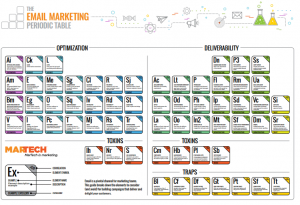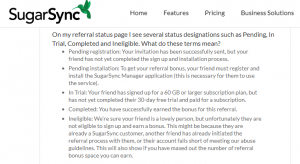
Right now you’re probably enjoying a pumpkin spice latte, football, and the transition between summer and fall. You’re probably also getting ready to brace yourself for the rapidly approaching holiday season.
Between all of the shopping and social functions you’ve got lined up, you somehow have to get your holiday marketing campaign in order – which means that you’re one busy individual. To help make the holidays run a little smoother for you, follow these PPC best practices.

1. Take a Look Back at Last Year
Before you get overwhelmed with your upcoming PPC holiday campaign, take a look back at previous campaigns. What keywords, bids, and dates were the most effective in driving traffic and conversions? What was your ROI like?
Pay close attention to factors like keywords, ad copy, and promotions that resulted in the most traffic on specific days and times. Once you have this information you can begin to create a plan for this year’s campaign.
Just a reminder, if you haven’t done so yet, you should link Google Analytics and AdWords together. Google Analytics is arguably one of the best tools to have if you want to understand how your website visitors behave.
2. If You Haven’t Already, Start Planning Now
Now that you have some data to guide your PPC campaign, you need to start planning…immediately. The holiday season kicks off in October, Google has actually found that 26% of shoppers start before Halloween, so if you don’t have a strategy in place by now, you’re not giving yourself a chance to outperform your competitors.
Since customers are researching products several weeks prior to Black Friday, you should have an idea on which offerings, promotions, and messages you’ll be sending out this holiday season. If you have this information available in the middle of November you’re increasing your chances of getting noticed ahead of time. However, according to Google, “A smart retailer will generate a bid schedule for the entire season, starting 4-5 weeks before the Thanksgiving holiday.”
When planning your upcoming PPC strategy make sure that you’ve already done research on your targeted keywords, as well as conducting a search for negative keywords.
3. Create a Schedule Around Key Dates
Did you know that searches for “ugly” Christmas sweaters peak on December 14? Did you also know that children procrastinate when it comes to searching for gift ideas for their mom (they wait until December 23)? Think With Google put together some extremely useful information regarding the biggest shopping days. This data should be used when planning your PPC strategy because it will help you determine when and where to bid through the holiday season.
If you didn’t do so yet, go back and click on that Think With Google link. there’s handy infographic to use when planning a schedule around certain dates this season.
4. Expect to Increase Your Budget
There’s a very good probability that traffic is going to increase during this time of year. This means that the budget that you had in place for the last month or so isn’t to be same. In fact, it’s probably going to increase.
To help make sure that you have enough in your budget to cover the cost of bids throughout the holidays, along with hectic days like Black Friday and Cyber Monday, you can go back and look at last year’s data. Since you may have already done this, you can review what your traffic and costs were last season. Even though it may not be exactly the same amount this year, last year’s data can at least give you an idea on what you expect your budget is going to be through the holidays.
Besides looking at your previous data, you can also make use of Google’s Bid Simulator Tool. This handy little tool will share traffic and cost estimates at the keyword and ad group levels so that you can estimate your budget. You can also use Google Trends to identify historical search trends. Knowing what people were searching for during the holidays could be another way to forecast your budget.
Finally, even after predicting your budget, you want to also be flexible. Keywords could easily change throughout the season. Make sure that you monitor your budget and make the proper adjustments.
5. Get Your Copy Festive
This may sound a bit obvious, but you should have ad copy that reflects the season. Use descriptive words and promotions, such as “Christmas,” “Holidays,” “Hanukah,” “Black Friday promotions,” or “free holiday shipping,” so that your ads can reach a wider audience.
Again, you need to plan this out in advance. It can take up to 48 hours for a new campaign will go live, so if you wait last minute to change your copy, you may be missing out on a golden opportunity to cash in this season. Additionally, preparing in advance gives you more time to identify and analyze the copy the will be most effective for your campaign.
6. Focus on Mobile
If you don’t have a mobile strategy in place then you need to get on that asap. And, here’s five reasons why that’s the case:
- Consumers spend more than 15 hours on mobile sites and apps conducting research.
- Mobile made up approximately 35% of online traffic during Q4 2013 (IBM Digital Analytics Benchmarks, 2014).
- Sales on mobile devices for December have risen by three times to 19.1% since 2011 (IBM ExperienceOne, 2014).
- During the 2013 holiday season, 52% of online smartphone shoppers used their phones during the shopping process (Google and Ipsos MediaCT, 2014).
- Mobile shopping consisted of 40% of Black Friday’s online shopping (Custora, 2014).
To tap into this trend you need to invest the time and funds into the mobile AdWords tools. And, here’s a couple of pointers when setting up your mobile PPC campaign:
- Set mobile bid adjustments to target the most valuable ad positions on mobile devices.
- Use mobile ad and sitelink preference settings to customize your advertising experience for mobile users.
- Have an optimized mobile landing page by making sure that it loads quickly, being “thumb-friendly,” and staying away from flash and plug-ins. Also, make sure that you use brief headlines and create short, simple forms.
- Create content that is mobile-specific.
- We’ll get into this in more detail, but don’t forget to leverage phone calls and call tracking, such as call extensions and website call conversions.
- If applicable, use app promotion tools.
Finally, if you don’t have a mobile or responsive design site, now is the time to create one so that you can reach the full potential of mobile customers.
7. Leverage Extensions and Product Listings
Back in 2013 Google made a rather significant AdWords update that allowed extensions to determine where ads appeared in SERPs. Larry Kim stated here on SEJ that “Extensions are useful for making ads more useful and interactive; they allow you to share more information in different ways and can make it easier for potential customers to connect.” Needless to say, extensions are now a major component of PPC campaigns and shouldn’t be overlooked this holiday season.
While there several extensions to consider, here are four extensions that you should definitely make sure are implemented as soon as possible.
- Sitelink Extensions: These extensions allow you to include additional lines and links. For the holidays, consider creating terminology that is holiday-specific and link tholiday-themeded landing pages.
- Call Extensions: If you haven’t done this already, make sure that you include your business’s phone number so that mobile users can directly call you with a clickable call button.
- Location Extensions: If you have a physical storefront, double check to make sure that your information is up-to-date and accurate.
- Review Extensions: You can also include reviews from credible third-party sites to convince potential customers that your business is worth supporting.
If you’re an e-commerce site, don’t forget to create a Google Merchant Center account. After you do, you can enable Product Listings Ads so that you can display your merchant name, product images, prices, and a link to the product page.
When setting up your shopping campaign, make sure that you meet Google’s requirements, avoid stock images, are mobile friendly, and create promotional feed centered around key dates and your best deals or products.
8. Dynamic Remarketing
If you haven’t experimented with remarketing yet, then now could be the best opportunity to give it a try. For those unfamiliar, remarketing (aka retargeting), are those ads that appear on your browser or app after you’ve visited a website. Remarketing is beneficial because they can remind potential customers about site, which in turn can increase conversion rates and and ROI.
Setting up a remarketing is fairly easy if you use the right platform. Google, for example, has a straightforward remarketing service that can be set up from within your AdWords account. To attract your specific audience make sure that you create optimized and fresh ads that your customers would want to take advantage of. For the holidays, this could be using festive images or text or offering a promotion like a coupon or free shipping. Don’t forget that your ads should redirected visitors to a landing page that matches the ad.
Besides the Big G, you could also explore retargeting platforms like AdRoll, Perfect Audience, Chango, Meteora, Stamedia, ReTargeter, Bidable, or Struq.
9. Automate, Automate, Automate
Both Google AdWords and Bing Ads have automated rules that allow you to prepare your campaign in advance so that you can actually enjoy the holidays and alleviate some of that stress that comes with the season. Instead of manually doing tasks like pausing low-performing ads or keywords, scheduling ads around specific promotions or events, changing keywords, or increasing keyword bids, you can automate these tasks.
Even though you can automate your campaign, that doesn’t give you the freedom to completely ignore it. If you can’t commit to a campaign, then consider bringing someone else to help monitor or run the campaign.
10. Expand Your Horizons
If you really want to stand out during the hectic holiday season, then don’t limit yourself to just one channel, product, or budget. For example, you could use valuable ad space to promote gift guides and an array of products on-top of your best selling product. You could also experiment with your budget and ad content for various members of your audience. If you do experiment though, don’t forget that landing that goes along with your ads.
Another way that you can expand your horizons this season is to give buy buttons a chance. These are just clickable, call-to-action buttons on social media channels like Facebook, Instagram, and Pinterest where visitors can purchase your product directly from that channel.
Final Words of Advice
If you’re going to run a PPC campaign this holiday season make sure that you work on that right now. Not only will that keep you organized, it will also prevent you from falling behind with your competitors and adding to your stress level. To build an effective PPC bidding strategy, you must understand your audience’s behavior, focus on keywords, messages, and dates that are relevant during the holidays. And, be certain that you’re mobile ready and that you have the proper budget for the campaign.
If you’ve run a successful PPC campaign during the past, what were the keys to your success?
Image Credits
Featured image: 3DDock/Shutterstock.com
In-post Photo: Vanatchanan/Shutterstock.com
Digital & Social Articles on Business 2 Community(61)








